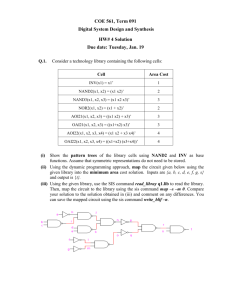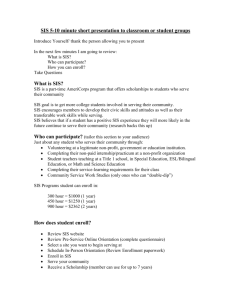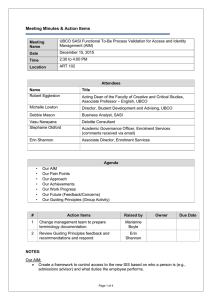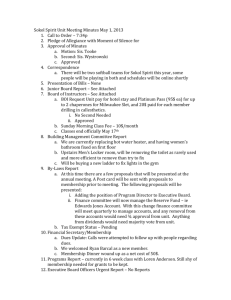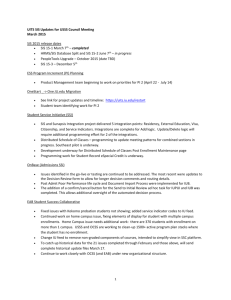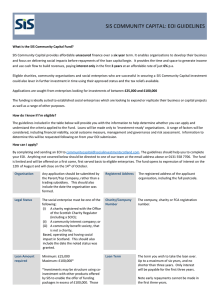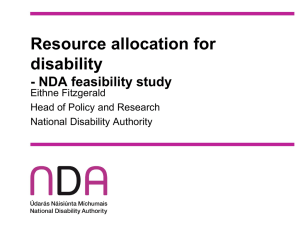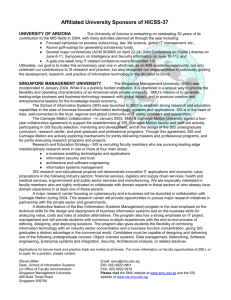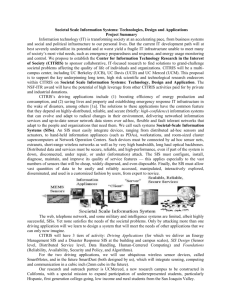This presentation
advertisement
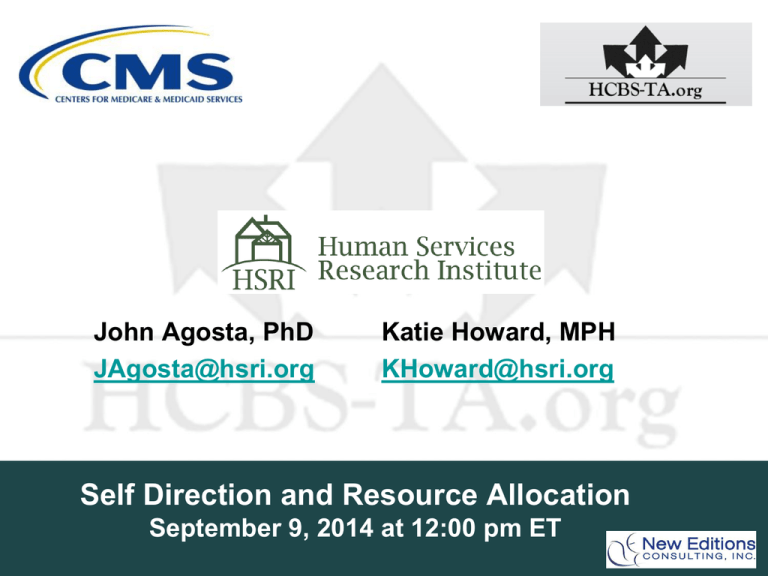
John Agosta, PhD JAgosta@hsri.org Katie Howard, MPH KHoward@hsri.org Self Direction and Resource Allocation September 9, 2014 at 12:00 pm ET Presentation Outline • • • • • Objectives Goals of Resource Allocation Steps in the Process Evaluation Managed Care and other State Plan options • Questions 2 Objectives • Identify issues that Resource Allocation addresses • Familiarize participants with methods of Resource Allocation • Identify steps to implementing Resource Allocation • Understand how assessment instruments can be used to set budgets Challenges in the Field • • • • • Accelerating service demand Budget stress Reliance on legacy and inefficient systems Workforce shortages Need for continued community integration and self direction Goals of Resource Allocation • Enable policy makers to make disciplined fiscal choices • Allocate resources based on assessed support level • Accommodate people with extraordinary needs in HCBS waiver programs • Can create flexibility in individual service planning A Lot We want to move from a low correlation like THIS… $ Little Little A Lot Support Needed …to a high correlation like THIS A Lot $ Little Little A Lot Support Needed Blending Together Principles Related to Service Delivery and System Management Services and Disciplined fiscal and management practices supports preferred by people with developmental disabilities A Person-Centered and Sustainable System Exemplar States that Use Assessment Informed Resource Allocation for People with IDD • Colorado - Supports Intensity Scale (SIS) • Connecticut – Level of Need (CT-LON) • Indiana - Inventory for Client and Agency Planning (ICAP) • Louisiana – SIS • New Mexico - SIS • • • • • Oregon – SIS Rhode Island – SIS South Dakota – ICAP Washington – SIS Wyoming – ICAP States in process: • North Carolina - SIS • Virginia -- SIS 8 Steps in the Process 1. 2. Establish guiding policy goals and a communication plan Identify and implement an assessment tool to measure support needs accurately and reliably. 3. Determine what services will be included in the model 4. If possible, review historical utilization for services that will be included in the model 5. Establish a supports level framework and assign individuals to their appropriate level 6. Identify “service packages” for each level (service and expected use) 7. Consider rates paid for services and calculate impacts 8. Validate the model with a review of individual records 9. Revise model as warranted then implement the model 10. Evaluate based on policy goals once full implementation has occurred Policy Goals • Establish guiding principles for the plan – – – – Integration Self direction Equity and efficiency Sustainability • Assess the current system: – Service array – Rate structure – Policies • Determine future goals for the system – Stakeholder input Assessment Tool • Identify an assessment tool – – – – – Valid Reliable Time and intensity of supports Align closely with ADLs/IADLs Identify other data need to be collected • Identify random stratified sample of service population • Create an assessment plan Included Services • Examine current waiver services • Determine if any need to be added to aid inclusion in the community • Establish which services will be a part of the resource allocation model • Examine historical utilization patterns in relationship to support assessment data and other factors Tying Supports to Budgets Framework • Groups individuals with similar needs • Reflects current support needs • Based on supports needed for every day activities as well as supports for behavioral or medical conditions • Includes exceptions process Establishing Supports Available Those above the authorization levels are reduced (and may be stepped down over time); those below may or may not increase based on their decisions. The system must take exceptional support needs into account. Factors to Consider • Assessment level framework • Using the instrument to inform design of a person centered plan. • Exceptions process • Per person costs in relation to the cost of implementing a resource allocation system • Child versus Adult differences • Living setting and impacts on anticipated costs • Specific state or jurisdiction factors Rates • Level of Support Framework can inform how much providers are reimbursed for certain individuals • Reimbursement rates for services should be fair and sufficient • Consider whether to incentivize services that increase community involvement and independence (i.e., employment) Service Packages • Identify factors that effect service packages • Group services together when establishing budgets • Create budgets for each combination of factors based on desired outcomes for support level with that combination of factors – For example, service packages are developed for adults that include an expectation of use of Supported Employment. • Consider base budgets versus add-on budgets Provider Networks • Identify gaps in service • Create policy for attracting providers • Establish service packages that allow providers to support individual at the person’s support level • Use rates to strengthen provider network in a way that aligns with system goals Validate Model • Pull a sample of records • Gather case files and other information • Verify that the person meets the criteria of the Level of Support • Confirm that the Service Package is adequate • Make adjustments to model based on issues identified during validation process Implementation • Communicate with Stakeholders throughout the process • Appeals process • Planning process – Protection against conflict of interest in case management – Person centered planning – Services used Evaluation Once system implemented: • Check reliability of assessors • Look at new service utilization patterns • Gather feedback from service recipients • Establish whether change has occurred related to original policy goals • In time, modify the model to address identified issues Resource Allocation within Managed Care and Other CMS Authorities • Commonly used with 1915(c) waivers • MLTSS for people with I/DD – 1915(b)/(c) – 1115 • Other State Plan options 1915(i)(j)(k) – Functional assessment – Flexible – Self-directed 23 Where to Find Help • To request TA: http://www.hcbs-ta.org/request.aspx • For additional information: http://www.hcbs-ta.org 24
